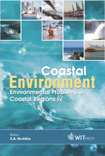Geomorphic Environmental Changes At Uluabat And Manyas Lakes (Southern Marmara Region, Turkey) From Neotectonics To Present Time
Price
Free (open access)
Transaction
Volume
58
Pages
Published
2002
Size
623 kb
Paper DOI
10.2495/CENV020091
Copyright
WIT Press
Author(s)
H Turoglu, M Uludag & B Mater
Abstract
Ulubat and Manyas Lakes (Southern Marmara Region, Turkey) and their close surroundings fall into one of the most active tectonic areas of Turkey due to their location on the Norther Anatolia Fault Zone. This location has been a primary reason for important geomorphic environmental changes at this area in Quaternary. This study consists a modelling of geomorphic environmental changes at Uluabat and Manyas Lakes and their close surroundings. In modelling, paleoclimatic, paleomorphologic ,paleobotanic, paleopedologic, and archeologic data have been evaluated together. Also, especially, boring data of Quaternary stratigraphy have been used. Lithological data, earthquake records of historical and instrumental eras, and contemporary geomorphological analysis results have contributed a great deal to this study The study area was probably a lagoonary environment which was connected to Marmara Sea during upper Miocene. Tectonical movements which began at that time and continued up to now have caused horizontal and vertical displacements also affecting streams resulting in drainage deformations and base level changes, which conform with such an alteration. Accordingly, six basic stages can be diferentiated belonging to geomorphologic development of sutdy area. In the last section, compare between 1965 and 2001 geomorphological features of area. As the factors and processes are still current at Uluabat and Manyas Lakes, geomorphic environmental changes that took place in a time span of 35 years are an indicator for extinction of these lakes in near future.
Keywords





